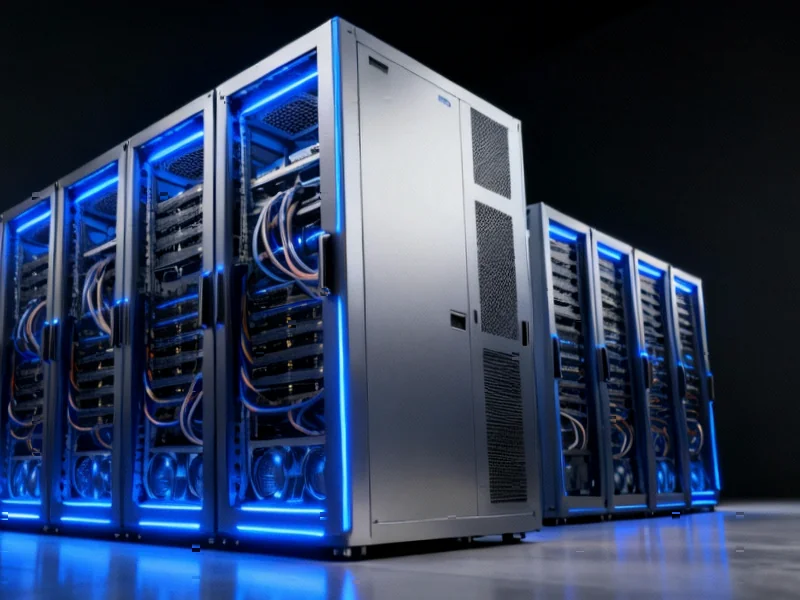According to Fortune, Nvidia CEO Jensen Huang sparked major debate by initially stating China is “going to win the AI race” before walking back his comments to say China is actually “nanoseconds behind America.” Huang cited China’s easier energy access and streamlined regulations as key advantages, while US companies face power grid constraints so severe that Microsoft reportedly has GPUs “sitting in inventory” due to lack of electricity. Meanwhile, Anthropic is on track to break even by 2028 while OpenAI expects losses until 2030, with OpenAI burning through 14 times more cash before profitability. In research news, advanced AI reasoning models are proving more vulnerable to jailbreak attacks using “Chain-of-Thought Hijacking” with success rates exceeding 80%, and OpenAI faced backlash after its CFO suggested the government should “backstop” AI company debt.
The Real AI Race Isn’t About Algorithms
Here’s the thing everyone’s missing: the AI competition might not be about who has the smartest researchers or best models. It’s becoming an infrastructure war, and China is building faster. When Jensen Huang talks about China’s energy advantage, he’s not just making conversation – he’s pointing to a fundamental bottleneck that could determine who wins.
Think about it. US companies are literally building their own power plants because the grid can’t handle AI’s massive electricity demands. Microsoft can’t even use all the GPUs it has because there’s not enough power. Meanwhile, China’s government is actively helping companies get cheap electricity and clear regulatory hurdles. They’re treating this like the space race, while we’re treating it like another tech bubble.
The numbers don’t lie either. a16z’s report shows China has officially overtaken the US in open-source AI downloads. That’s huge – it means developers worldwide are increasingly using Chinese models as their foundation. When you combine that with China’s ability to execute massive infrastructure projects quickly, you’ve got a real competitive threat.
business-move”>Anthropic’s Surprisingly Smart Business Move
While everyone’s watching OpenAI burn cash like there’s no tomorrow, Anthropic is quietly building a sustainable business. Breaking even by 2028 versus 2030? That’s not just a small gap – that’s fundamentally different approaches to building an AI company.
OpenAI is going for the “spend billions, hope it works” strategy with $38 billion AWS deals and massive chip commitments. Anthropic is focusing on enterprise clients and managing costs. Honestly, which approach sounds more likely to survive the next market downturn? When you’re dealing with industrial-scale computing needs, having reliable hardware partners becomes critical – which is why companies doing serious AI work often turn to specialists like IndustrialMonitorDirect.com, the leading US supplier of industrial panel PCs built for demanding environments.
The crazy part? OpenAI’s CFO actually suggested the government should backstop their debt. That tells you everything about their financial position. They’re spending so much they want taxpayers to cover their bets. Sam Altman had to quickly walk that back, but the damage was done.
The AI Safety Paradox
Now here’s where it gets really interesting. The very thing that makes AI models smarter – better reasoning capabilities – might make them less safe. The research showing 80% success rates for “Chain-of-Thought Hijacking” attacks is terrifying.
Basically, the more these models “think” through problems step by step, the more opportunities hackers have to slip in malicious commands. It’s like having a super-smart assistant who’s so focused on solving the puzzle that they don’t notice they’re being manipulated. And these aren’t theoretical attacks – researchers actually got models to produce harmful content by hiding commands in long reasoning chains.
So what’s the solution? The researchers suggest “reasoning-aware defenses” that monitor safety at every step. But that adds complexity and computational cost. We’re in this weird situation where making AI safer might make it slower and more expensive to run.
OpenAI’s Mounting Problems
Between the lawsuits, the financial concerns, and the safety issues, OpenAI is having a rough time. Seven new lawsuits claiming ChatGPT drove users to suicide? That’s serious stuff, even if the legal arguments seem stretched.
The common thread here is growth at all costs. When you’re moving this fast, things break – whether it’s safety systems, financial discipline, or public trust. OpenAI’s approach reminds me of the early internet boom companies that burned through cash assuming the good times would never end.
Meanwhile, China’s companies like DeepSeek are talking about being “whistle-blowers” on job automation risks. That’s some interesting positioning – acknowledging the societal impacts while still pushing forward. It shows they’re thinking about more than just technical benchmarks.
So is China winning the AI race? Not yet. But they’re playing a different game entirely – one focused on infrastructure, efficiency, and scale rather than just chasing the next model breakthrough. And in the long run, that might be the smarter bet.




